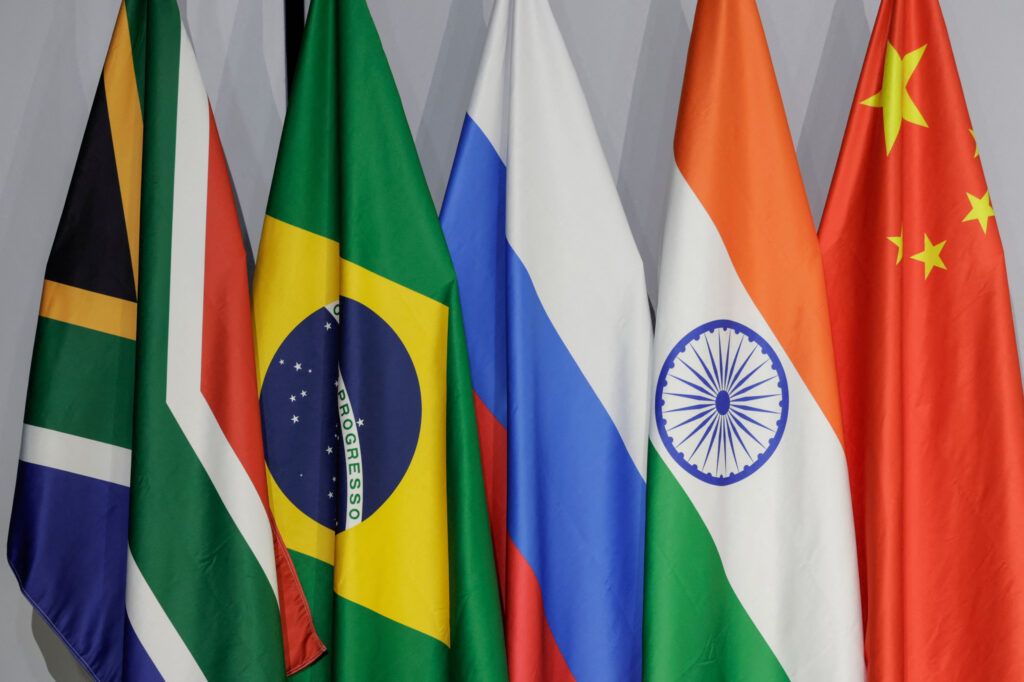BRICS Summit Signals Rising Geopolitical Shifts: A Challenge to US Dominance
This month’s series of high-profile global summits have painted a vivid picture of the growing geopolitical divides that condition contemporary world politics and pose threats to U.S. interests. While the G7 and Ukraine peace summits grabbed media headlines, an equally significant yet less-publicized meeting happened in western Russia — the BRICS foreign ministers convened with representatives from nearly two dozen Global South countries.
As with the G7 and Ukraine gatherings, the BRICS meeting did not produce groundbreaking policy changes. Nonetheless, it revealed an increasing number of nations discontented with U.S. policies. These countries are exploring alternatives to Washington’s leadership, gravitating towards an emerging trend of de-dollarization.
Background on BRICS
The BRICS consortium — comprising Brazil, Russia, India, China, and later South Africa — was founded in 2006 with the intent of reforming international financial institutions like the IMF and World Bank. The group established the New Development Bank in 2014 but struggled to gain significant momentum until recent years.
Earlier this year, regional powers such as Iran, Ethiopia, Egypt, and the United Arab Emirates officially joined the BRICS framework. Despite the new additions, Moscow’s ambassador to China emphasized that the coalition’s popularity exceeds its current absorption capacity, hinting at an eager queue of nearly 30 nations looking for membership.
Countries such as Turkey and Thailand, historically aligned with Western policies or ambivalent on the global stage, have also expressed interest in joining BRICS. The motivations behind this shift are clear: countries are seeking new security, governance, and financial architectures to counter what they perceive as a Western-centric system.
A Surge in Global South Solidarity
The BRICS assembly prominently features the grievances and aspirations of Global South nations — a rarity in Western-led forums. The issue of anti-U.S. sentiments emerges as a potent unifier among BRICS members and their Global South allies.
The statistics surrounding BRICS are formidable. Collectively, these nations account for over 40 percent of the world’s population, 28 percent of global economic output, and nearly half of global crude oil. An expanded BRICS that includes additional oil-producing and regional powers could pose significant concerns for the U.S., particularly in the sphere of de-dollarization.
One of the strategies the group utilizes to challenge the dollar’s supremacy involves enhancing the use of local currencies in trade and financial transactions. China leads this initiative as it aims to internationalize its currency. Since Russia’s invasion of Ukraine in 2022, China has increased its use of the yuan to purchase Russian commodities, especially oil. This year, the renminbi has overtaken the U.S. dollar as the principal currency in Chinese-Russian trade. Moreover, China is negotiating with other key oil producers like Iran, Iraq, and Saudi Arabia to adopt the yuan for oil transactions.
The Shift from the Dollar
In 2023, roughly 20 percent of global oil was transacted in currencies other than the U.S. dollar. Nations under U.S. sanctions, like Iran and Russia, are not alone in seeking diversification. Brazil, the UAE, and even Saudi Arabia are taking steps to shield themselves from Western sanctions on oil and other commodities. As a part of this transition, China is liquidating its U.S. dollar assets, and both China and Russia have substantially increased their gold reserves.
This trend of de-dollarization carries severe implications for the U.S. and its economy, especially amidst inflation. Since the 1970s, the U.S. dollar has been the standard currency for oil transactions, known as the petrodollar. This status has sustained the dollar’s demand, enabling low borrowing costs and the ability to run deficits, thus supporting Americans’ living standards.
U.S. Policies Under Scrutiny
Despite its dominant stance, U.S. sanction policies are inadvertently eroding the dollar’s stronghold. Covering 29 percent of the global economy and 40 percent of global oil reserves, these sanctions often fail to achieve their intended outcomes. For instance, longstanding sanctions on Cuba have not yielded desired changes. Instead, such measures are fostering an “Axis of Evasion” among nations like Russia, Iran, Venezuela, North Korea, and China.
The U.S. image as “the indispensable nation” is under question as more countries view its dominance as increasingly hypocritical. Many perceive inconsistencies in Washington’s positions on conflicts such as those in Gaza and Ukraine and argue that the rules-based order is selectively enforced.
While predictions about the dollar’s immediate collapse may be exaggerated, the de-dollarization movement indicates significant discontent with U.S. hegemony. The U.S. must reconsider its foreign policy approach, specifically its reliance on sanctions and its overarching commitment to maintaining global primacy. A strategic shift towards restraint might be necessary as the global landscape continues to evolve, with more nations coalescing to diminish the U.S. dollar’s preeminence and contest Washington’s leadership.
For more information on BRICS, visit the official website.
